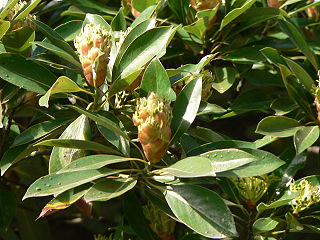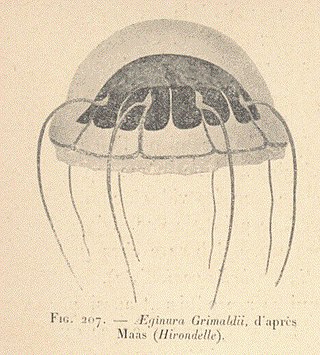
Hong Kong is a special administrative region of the People's Republic of China. With 7.4 million residents of various nationalities in a 1,104-square-kilometre (426 sq mi) territory, Hong Kong is one of the most densely populated territories in the world.
The ecology of Hong Kong is mostly affected by the results of climatic changes. Hong Kong's climate is seasonal due to alternating wind direction between winter and summer.

Mid-Levels is an affluent residential area on Hong Kong Island in Hong Kong. It is located between Victoria Peak and Central. Residents are predominantly more affluent Hong Kong locals and expatriate professionals.

The Hong Kong Zoological and Botanical Gardens is one of the oldest zoological and botanical centres in the world, and the oldest park in Hong Kong. Founded in 1864, its first stage was opened to the public in 1871. It occupies an area of 5.6 hectares, in Central, on the northern slope of Victoria Peak.

The Sai Kung Peninsula is a peninsula in the easternmost part of the New Territories in Hong Kong. Its name comes from Sai Kung Town in the central southern area of the peninsula. The southern part of the peninsula is administered by Sai Kung District, the north by Tai Po District and the northwest by Sha Tin District.

Persea is a genus of about 150 species of evergreen trees belonging to the laurel family, Lauraceae. The best-known member of the genus is the avocado, P. americana, widely cultivated in subtropical regions for its large, edible fruit.

Stenopus hispidus is a shrimp-like decapod crustacean belonging to the infraorder Stenopodidea. Common names include coral banded shrimp and banded cleaner shrimp.

Out of the total 1,092 km2 of land in Hong Kong, three-quarters is countryside, with various landscapes including beaches, woodlands, and mountain ranges being found within the small territory. Most of Hong Kong's parks have abundant natural diversity, usually containing over 1,000 species of plants.

Machilus is a genus of flowering plants in the family Lauraceae. It is found in temperate, subtropical, and tropical forest, occurring in China, Korea, Japan, Taiwan, Indochina, the Indian subcontinent, Malaysia, Indonesia, and the Philippines. It is sometimes included in the genus Persea, and currently includes about 100 species.

Golden Hill Country Park or Kam Shan Country Park, also known in Hong Kong as Monkey Hill, established on 24 June 1977, is a country park located in the ranges north of Kowloon, Hong Kong. It covers an area of 3.37 square kilometres (1.30 sq mi). Most of the area is covered by the Kowloon Group of Reservoirs. Inside the park, there are jogging trails, barbecue and picnic areas, which are easily accessible from Tai Po Road via waterworks access roads. The park takes its name from the 369 metres (1,211 ft) peak, Golden Hill or Kam Shan (金山), which is the highest feature in the area.

Troides helena, the common birdwing, is a butterfly belonging to the family Papilionidae. It is often found in the wildlife trade due to its popularity with butterfly collectors. The butterfly has seventeen subspecies.

Ma On Shan is a saddle-shaped peak in east of Tolo Harbour in the New Territories of Hong Kong. With a height of 702 metres (2,303 ft), it stands among the ten highest mountains in Hong Kong. The mountain borders Sha Tin and Tai Po districts.

Pok Fu Lam Country Park is located on Pok Fu Lam, the western end of the Southern District of Hong Kong Island. The 270-hectare park was designated in 1979.

Actias ningpoana, the Chinese moon moth, is a species of moth in the family Saturniidae. The species was first described by father-and-son entomologists Cajetan and Rudolf Felder in 1862. It is quite large, and has long, curved, hindwing tails. There are many congeners across Asia; the Luna moth of eastern Canada and the United States is a close relative.

The Pyralinae are the typical subfamily of snout moths and occur essentially worldwide, in some cases aided by involuntary introduction by humans. They are rather rare in the Americas however, and their diversity in the Australian region is also limited. Altogether, this subfamily includes about 900 described species, but new ones continue to be discovered. Like many of their relatives in the superfamily Pyraloidea, the caterpillar larvae of many Pyralinae – and in some cases even the adults – have evolved the ability to use unusual foods for nutrition; a few of these can become harmful to humans as pests of stored goods.

Cethosia biblis, the red lacewing, is a species of heliconiine butterfly belonging to the family Nymphalidae.

Monoplex parthenopeus, common name the giant triton or giant hairy triton, is a species of sea snail, a marine gastropod mollusk in the family Cymatiidae. It preys on other molluscs.

Tai Mo Shan is the highest peak in Hong Kong, with an elevation of 957 metres (3,140 ft) above the Hong Kong Principal Datum, or around 956 metres (3,136 ft) above mean sea level. It is located at approximately the geographical centre of the New Territories.

Aeginura grimaldii is a species of deep sea hydrozoan of the family Aeginidae. It is found in the north-eastern Atlantic Ocean, Pacific Ocean, and the Arctic Ocean. It has a depth range of 660-1200m deep. Live specimens are bright reddish in color, with pale tentacles, and a light red globous capsule dome containing the dark colored red body. It usually measures no more than 4.5cm from the peak of the bell to the end of the tentacles.

Ng Tung Chai, also known as Wong Fung Chai (黃峰寨), is a village in Lam Tsuen, Tai Po District, Hong Kong. It is the departure point of a trail leading to a group of waterfalls, on the northern slope of Tai Mo Shan.


















